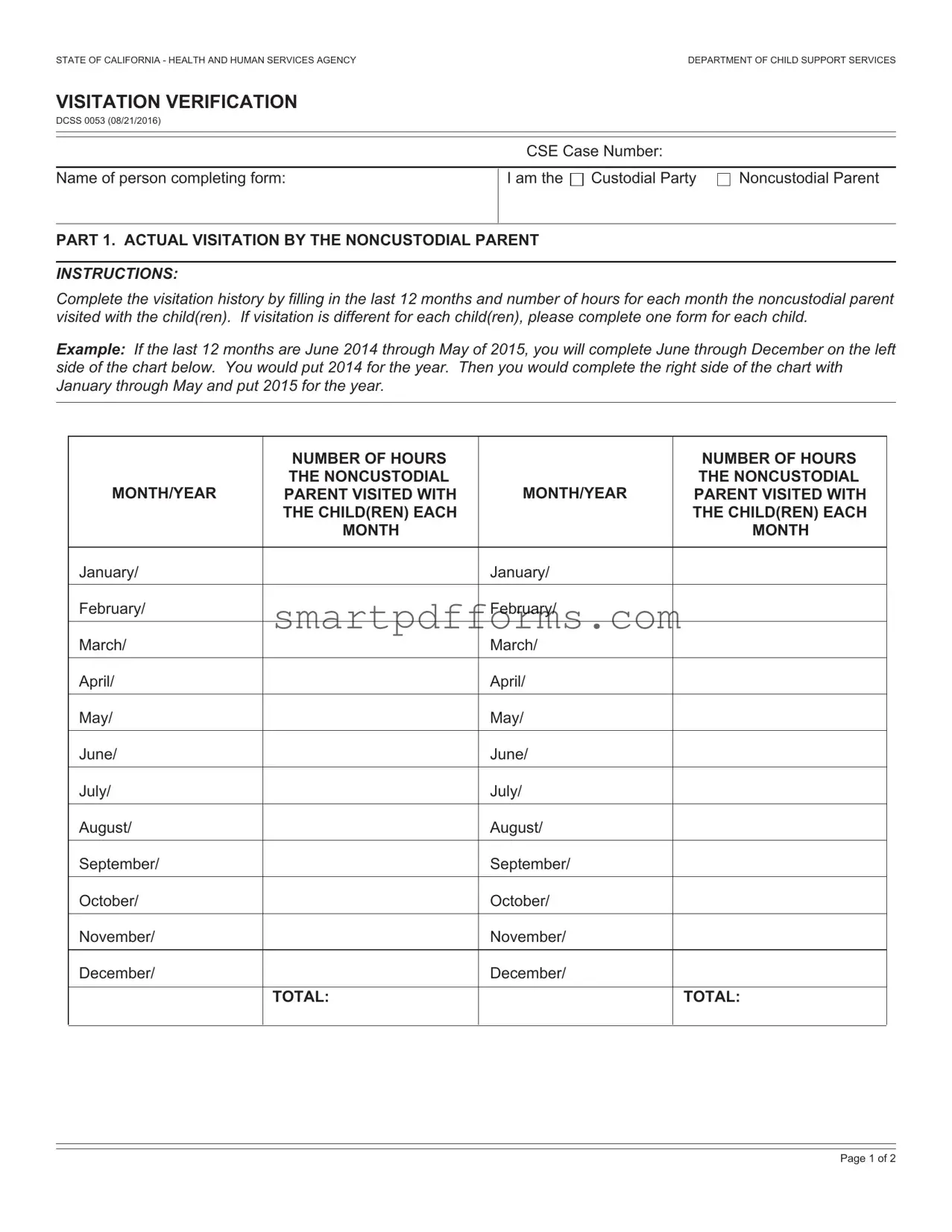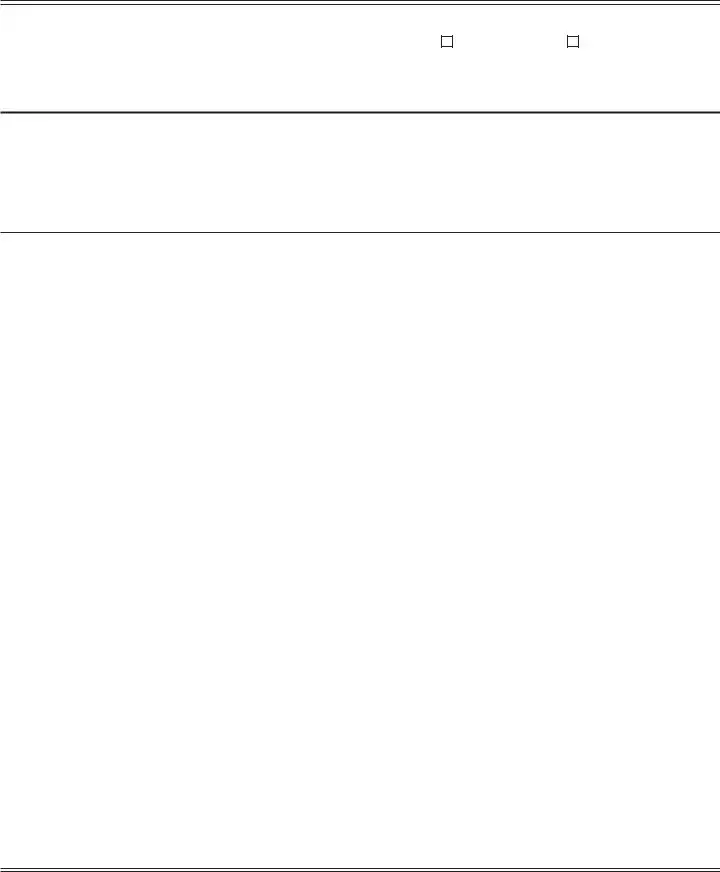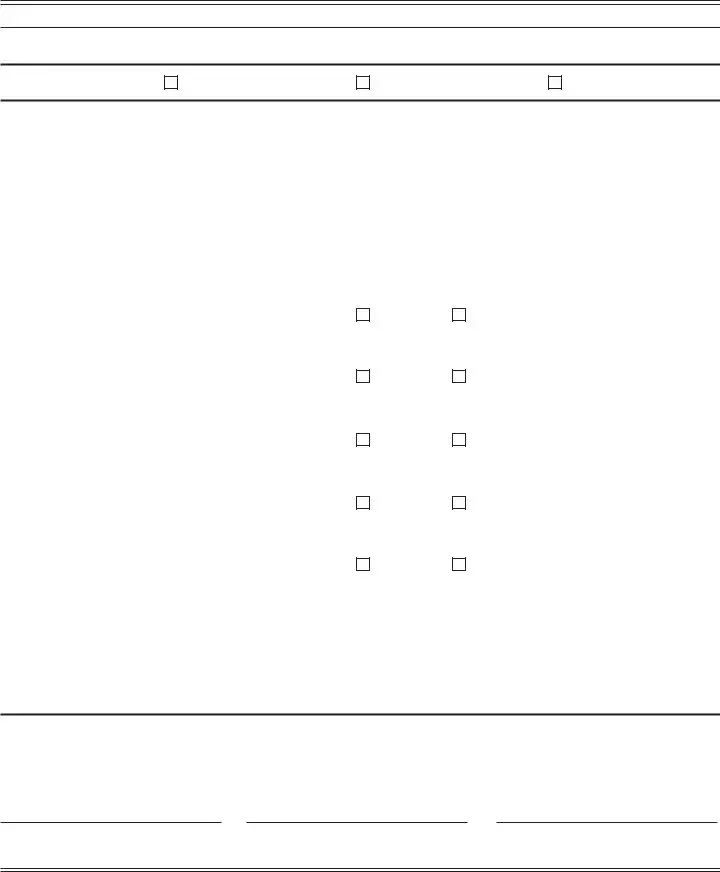Blank Dcss 0053 PDF Template
The DCSS 0053 form is a document issued by the State of California Health and Human Services Agency, Department of Child Support Services, designed for the verification of visitation schedules involving noncustodial parents. This form records detailed visitation information, including the frequency and duration of visits over the past 12 months, as well as specifics regarding shared custody and visitation arrangements. To ensure the child support services are accurately informed and to facilitate any necessary adjustments to support obligations based on actual visitation, completing this form is a crucial step for both custodial and noncustodial parties.
If you are ready to provide the necessary information regarding visitation schedules to the Department of Child Support Services, click the button below to get started on filling out the DCSS 0053 form effectively.


